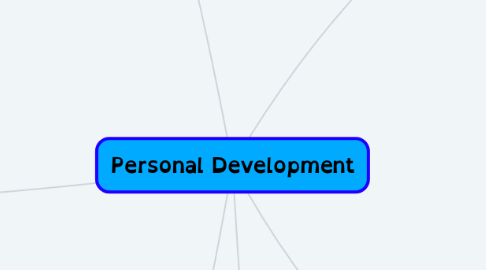
1. The Challenges of a late and middle adolescence
1.1. Developmental Changes in Middle and Late Adolescence
1.1.1. Physical
1.1.2. Identity/ Self-Concept
1.1.3. Emotional Behavior
1.1.4. Social Attitude
1.1.5. Peer Relationships
1.1.6. Family Relationships
1.1.7. Romantic Relationships
1.1.8. Sexual Relationships
1.1.9. Decision Making
1.1.10. Cognitive Development
1.1.11. Values/ Morality
1.1.12. Career Goals
1.2. Challenges in Middle and Late Adolescence
1.2.1. Emotional Maturity
1.2.2. Creation of stable identity
1.2.3. improvement of decision-making skills
1.3. The significant others
1.3.1. Parents
1.3.1.1. who gives birth
1.3.2. Siblings
1.3.2.1. same household
1.3.3. Teachers
1.3.3.1. delivers educational program
1.3.4. Community Leaders
1.3.4.1. represents community
1.3.5. Friends
1.3.5.1. has bond mutual affection
1.4. Dealing with significant others
1.4.1. Genuinely respect other people
1.4.2. Never lose faith in humanity
1.4.3. Share your blessings
1.5. Affirmation
1.5.1. formatted statement that should repeated to one self.
2. Coping with stress in middle and late adolescence
2.1. Stress
2.1.1. Medical term for a wide range of strong external stimuli.
2.2. Stressor
2.2.1. the term used to denote those who which causes stress
2.3. Common Stressor in the lives of Adolescents
2.3.1. Physical Appearance
2.3.2. family/Home
2.3.3. School/ Academic Pressure
2.3.4. Loss
2.4. Effects of Stress
2.4.1. Physical
2.4.1.1. increases the level of adrenaline and corticosterone in the body
2.4.2. Emotional
2.4.2.1. are prone to agitation, impatience and moodiness
2.4.3. Cognitive
2.4.3.1. are filled with worrying becomes forgetful and disorganized
2.4.4. Behavioral
2.4.4.1. lose appetite or tends to overeat
2.5. Stress Responses
2.5.1. Flight response
2.5.1.1. Walter Cannon
2.5.2. General Adaptation Syndrome
2.5.2.1. Dr. Hans Selye
2.5.2.2. Alarrm Phase
2.5.2.3. Resistance Phase
2.5.2.4. Exhaustion Phase
2.5.3. Relaxation Response
2.5.3.1. Dr. Herbert Benson
2.6. Common coping strategies
2.6.1. Problem-focused approach
2.6.1.1. focus on the source of stress
2.6.2. Emotion-focused strategy
2.6.2.1. one's feeling emotion brought by stress
3. Mental Health and Well- Being in Middle and Late Adolescence
3.1. Mental Health
3.1.1. level of psychological well-being; absence of mental disorder
3.1.2. how people handle stress
3.2. Psychological Well-Being
3.2.1. linked to happiness
3.2.2. Carol riff; subjective
3.3. Common mental health disorders
3.3.1. Depression
3.3.1.1. most frequent illness
3.3.2. Anxiety disorders
3.3.2.1. disturbances in brain mechanism
3.3.3. Psychotic Disorders
3.3.3.1. interruptions in thinking and perception
3.3.4. Eating disorders
3.3.4.1. excessively conscious on one's body figure
3.3.5. Developmental disorders
3.3.5.1. disorders in brain development
3.3.6. Behavioral disorders
3.3.6.1. defect in anticipated behaviors of an individual
3.4. Occurence due to factors
3.4.1. Biological Factors
3.4.2. Life experiences
3.4.3. family history
4. The Powers of Mind
4.1. The Lateralization of the Brain: The Left and Right Brain Theory
4.1.1. Roger Sperry and Robert Ornstein
4.1.1.1. Right-Brained Individuals
4.1.1.1.1. seem to view things through feelings; visual references as a whole before the details.
4.1.1.2. Left-Brained Individuals
4.1.1.2.1. Very organized and logical; process ideas step-by-step and commit less mistakes
4.2. The Theory's Advantages
4.2.1. seem to help in improving one's learning
4.2.2. provides an understanding on where human good and needs an improvement
4.2.3. Understanding one's strengths and weaknesses
4.3. Disadvantages
4.3.1. stereotyping which results to self-fulfilling prophecy
4.3.1.1. Self- Fulfilling Prophecy is a prediction that causes to become true due to positive feedback.
4.4. The Mind Map
4.4.1. Tony Buzan
4.4.2. creative and logical way of organizing ideas
4.4.3. Two-types of mind mapping techniques
4.4.3.1. Handwritten
4.4.3.1.1. traditional mind map using hands
4.4.3.2. Digital/ Computerized
4.4.3.2.1. modern mind map using computers
4.4.4. Steps in Making Mind Map
4.4.4.1. Decide on mind map you want to make
4.4.4.2. Think of the main idea for the mind map
4.4.4.3. Add branches to the Main Idea
4.4.4.4. Supplement with key words
4.4.4.5. Incorporate colors into the branches
4.4.4.6. Attach images.
5. Knowing and Understanding oneself during middle and late adolescence
5.1. Self-Awareness
5.1.1. empowers to make personal improvements
5.1.2. understanding your own habits and desires
5.2. Self-Concept
5.2.1. awareness of yourself
5.2.1.1. Ideal Self
5.2.1.1.1. the self you aspire to be
5.2.1.2. Actual Self
5.2.1.2.1. the one you actually see
5.3. Being in the adolescence stage
5.3.1. adolescence from the Latin word adolescere which means grow
5.3.2. G. Stanley Hall = Father of Adolescence
5.3.3. stage of extreme growth
5.3.4. characterized by teenager's conflict with parents and risky behavior
5.3.5. a difficult stage
5.4. Significant Changes
5.4.1. Physical Aspect
5.4.2. Cognitive
5.4.3. Emotional Aspect
5.4.4. Morals and Values
6. Developing the whole person
6.1. The aspects of holistic Development
6.1.1. Physiological Development
6.1.1.1. Resemble adult bodies in size, shape and body composition.
6.1.2. Cognitive Development
6.1.2.1. begin to think from concrete to abstract terms and able to conceptualize theoretical ideas.
6.1.3. Psychological Development
6.1.3.1. Changes in the emotions, feelings, moods and manner of thinking of persons are part of this development.
6.1.4. Social Development
6.1.4.1. adolescents’ clamor for independence is evident.. However, there would be a re-establishment of good relationships with families in late adolescence.
6.1.5. Spiritual Development
6.1.5.1. questions concerning existence,essence, spirituality, religion and God.
6.2. The Power triad
6.2.1. Thoughts
6.2.1.1. arrangement of ideas that results to thinking
6.2.2. Feelings
6.2.2.1. state of consciousness
6.2.3. Behavior
6.2.3.1. range of actions and mannerisms made by human

